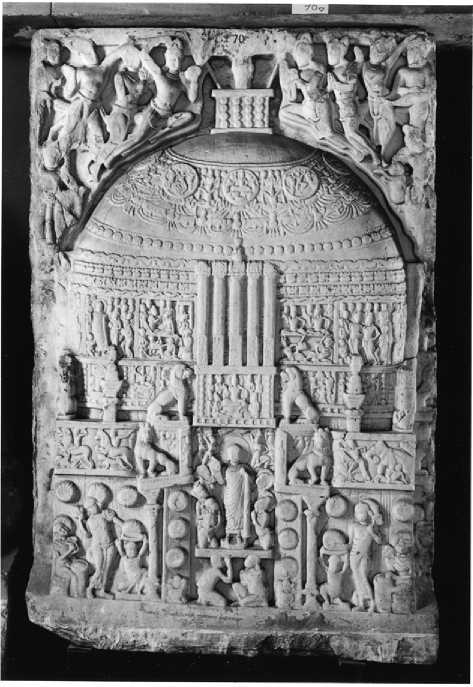The objects deemed suitable to be treated as relics included, the cremated remains of the Buddha (especially tooth and hair relics); the objects of his personal use (robe, begging bowl); somewhat later, texts representing his teachings; bodhisattvas (future Buddhas) and the cremated remains of his principal disciples were also treated as relics. Later still c. third century

Figure 4 Stone slab carved in high relief showing an Andhra-style stupa with decorated areas, ayaka platform and pillars (from the drum of the Amaravati stupa. By courtesy of the British Museum, c. third century CE.
CE, the cremated remains of distinguished abbots and monks were deemed suitable. This last remains a living tradition in Thailand today, where most of the cremated remains of particularly venerated abbots or monks are interred as relics in stupas of medium size - c. 4 m high - in conspicuous locations within the sacred sima territory of the monastery (e. g., beside the Ordination Hall). A part of the ash and bone, however, is set aside to be mixed with clay and fired, forming terra cotta votive tablets identified with that monk, which are worn and venerated by the laity as protective relics. The cremated remains of the laity, by contrast, are interred in quite small stupa-shaped urns - c. 50 cm high - arranged along the perimeter of the sima territory. Pairing this information with the evidence from early stupas in Northwest India and Afghanistan and slightly later ones in Andhra, it becomes clear that in Buddhism at certain times and places, there has been a long and permeable boundary between relics and burials, whether in stupas or other sacred places.




 World History
World History









